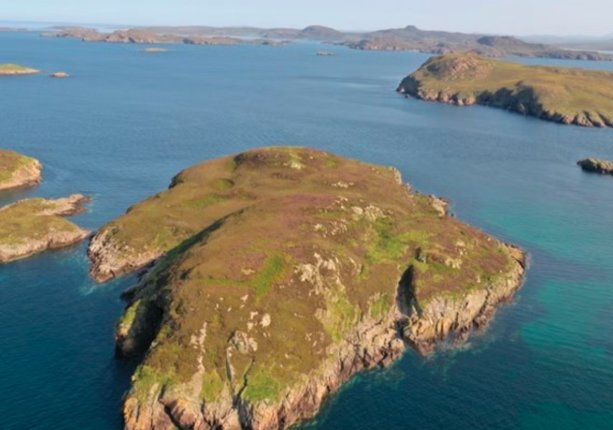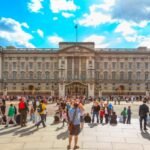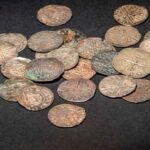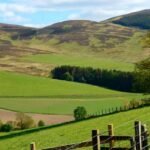90-acre Insh Island hits market at £500,000 as rural land reform campaigners renew calls for public buyouts
A 90-acre slice of raw, Atlantic-washed wilderness has just entered Scotland’s property market — at a price that undercuts the average London home. But as Insh Island, one of the Inner Hebrides’ last privately owned “untouched” islands, goes up for sale at £500,000, land campaigners warn its future is far from just a matter of real estate.
The island, a rugged outcrop of rock, grass and heather west of Easdale, is listed with estate agency Savills for the first time since 2019. With no roads, power grid or permanent structures — save for a makeshift cave dwelling once inhabited by a hermit — the island represents both a romantic escape and a potent symbol in Scotland’s ongoing debate over land ownership and access.
“There’s enormous public interest in places like Insh — not because they’re luxury real estate, but because they represent the last vestiges of common heritage,” says Dr. Mairi Graham of the Scottish Land Commission. “The question is: who gets to own that heritage, and for what purpose?”
Island Life, Rewilded
Insh is one of the Slate Islands, a tiny archipelago historically quarried for slate but now mostly known for wildlife and isolation. With views over the Sound of Insh and only a short boat ride from Easdale, the island is technically reachable — but only by private vessel or helicopter. There is no jetty, pier or habitable structure, though a rudimentary “cave house” on the northwest shore once sheltered its best-known modern resident, David Brearley, for three decades.
Brearley, who passed away in 2016, left the island to the National Trust for Scotland (NTS), sparking a brief moment of public ownership. But NTS sold it in 2019 for £353,000 — a move that drew fire from local politicians and land campaigners who argued the sale bypassed the possibility of a community buyout.
Now, its relisting has renewed calls for the Scottish Government to intervene.

Land Reform Tensions Surface Again
Under Scotland’s evolving land reform legislation, communities have the right to register interest in buying land when it comes up for sale. But activists say the system is too slow and underfunded to act in time on highly sought-after private sales like Insh.
“We’re talking about a place that could serve as a living laboratory for rewilding, eco-tourism, or even climate adaptation research,” says Rhona MacColl, a trustee of Community Land Scotland. “Instead, we’re seeing it marketed as a novelty for the global elite.”
The Scottish Greens, part of the governing coalition until their exit in May, previously proposed expanding Scotland’s public land fund and simplifying the community right-to-buy process. But reforms have stalled amid budget constraints and political reshuffles within the SNP.
Nature or Nostalgia?
For those with money and imagination, the listing presents a unique kind of opportunity. Savills describes the island as “a rare example of Hebridean wildland,” ideal for conservationists, writers, or those pursuing “a life off-grid.”
“There are no planning permissions in place,” says Louise Shuttleworth, who is managing the sale for Savills. “It’s completely undeveloped — that’s both the challenge and the charm.”
Yet even this framing raises eyebrows. Critics argue the idea of private “wilderness” is itself flawed — often sanitizing the historical displacement of crofting communities during the Highland Clearances.
“The narrative of untouched land is seductive,” says Professor Calum Henderson of Edinburgh University’s School of Scottish Studies. “But there’s always a history beneath the heather.”
Buying Into the Myth?
Scotland has seen a surge in demand for private islands and rural land since the pandemic, driven by a mix of domestic buyers and overseas investors. Land values in parts of the Highlands and Islands rose by 45% between 2020 and 2024, according to data from the Royal Institution of Chartered Surveyors.
But Insh’s relatively low asking price — £500,000, compared to the £566,000 average cost of a London home — may be deceptive. The costs of development, transport, and environmental compliance could quickly push any project into seven-figure territory.
Still, the island’s reappearance on the market at a time of growing interest in environmental land use has reignited debate about how such places should be owned, preserved, and accessed.
For now, Insh remains — in every sense — adrift: a quiet, craggy outpost awaiting its next chapter, whether as private idyll, publi


















